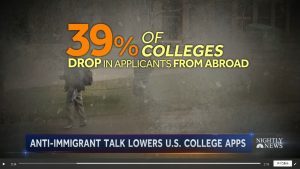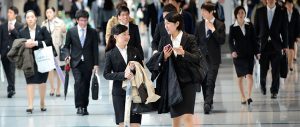A new survey reveals that nearly 40% of universities in the US experienced a decline in international applications from countries, China, India, and especially the Middle East. http://www.nbcnews.com/nightly-news/survey-finds-foreign-students-aren-t-applying-american-colleges-n738411
According to the survey, the most frequently noted concerns of international students and their families include:
– Perception of a rise in student visa denials at U.S. embassies and consulates in China, India, and Nepal.
– Perception that the climate in the U.S. is now less welcoming to individuals from other countries.
– Concerns that benefits and restrictions around visas could change, especially around the ability to travel, re-entry after travel, and employment opportunities.
– Concerns that the Executive Order travel ban might expand to include additional countries.
A decrease in international enrollment at some schools could have a great economic impact, given that international students brought more than $32 billion in 2016 into the U.S. economy.
<Discussion questions>
What is the impact of the US international students decline on the US other than economic impact mentioned above? What is the effect on higher education institutes in the world?
<Reference>
http://college.usatoday.com/2017/04/12/college-applications-from-international-students-are-taking-a-hit/
https://www.masterstudies.com/news/New-Trends-in-US-International-Student-Enrollment-1535/


